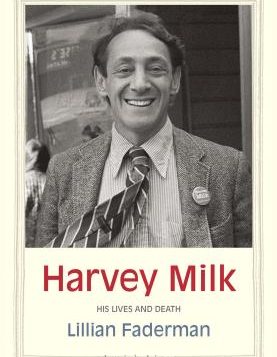 Harvey Milk: His Lives and Death
Harvey Milk: His Lives and Death
by Lillian Faderman
Yale Univ. Press. 305 pages, $25.
I WAS in my first semester at SUNY Plattsburgh on November 27, 1978, the day that ex-supervisor Dan White gunned down the mayor of San Francisco, George Moscone. I remember watching Moscone’s funeral on the news a few days later and being struck by the sight of his wife and many children following his casket. But to me this was just more craziness out of that wacky city, occurring just days after the Jim Jones’ People’s Temple mass suicide in Guyana. If I heard the name of another victim, it didn’t stick with me at the time. I came to know of Harvey Milk years later when I was coming out in full thrust and a friend invited me to watch The Times of Harvey Milk with him. History as I should have known it was all completely new to me; I was so moved by the documentary that I’ve been fascinated by Milk ever since, especially by what he could have been had he lived.
As Lillian Faderman’s new biography, Harvey Milk: His Lives and Death, reveals, Milk was not the first openly gay politician elected to public office, or even the first politician of significance to be out about his sexuality. But his theatricality at bringing about social change, as well as his bewildering death, pushed him to the forefront of national attention the way no other gay politician had been.
Peter Marino is an English professor at SUNY Adirondack in Queensbury, New York.







